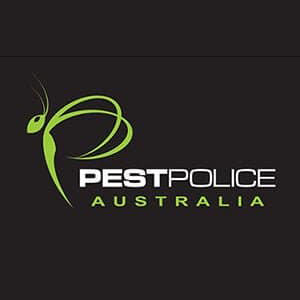Maintaining a pest-free household is crucial for your family’s comfort, health, and safety. However, despite our best efforts, common household pests can often find their way into our homes, wreaking havoc and causing inconvenience. That’s where Pest Police comes to the rescue.
In this blog, we will explore the world of common household pests and delve into how our team at Pest Police can assist you in identifying and eliminating these unwelcome intruders. With our expertise and specialised knowledge, we offer professional services that go beyond mere extermination, providing tailored solutions to prevent future infestations and ensure a pest-free environment for years to come.
What are Common Household Pests?
Common household pests can be a persistent nuisance, compromising the comfort and safety of your home. From ants marching across your kitchen countertops to bed bugs invading your mattress, these unwelcome guests can cause frustration and even pose health risks.
Let’s explore the most common household pests and understand the characteristics, habits, and risks associated with these unwelcome visitors.
Ants
Ants are among the most common household pests, particularly in warmer climates. They are attracted to food sources and can quickly infest your kitchen and pantry. Common ant species include carpenter ants, fire ants, and sugar ants. While some ants pose minimal risks, others can cause structural damage or deliver painful bites.
Understanding their behaviour, such as following scent trails and establishing colonies, is crucial for effective ant control.
Cockroaches
Cockroaches are resilient pests that thrive in warm and humid environments. They are nocturnal and tend to hide in dark, damp areas like kitchens, bathrooms, and basements. Cockroach infestations can pose serious health risks, carrying bacteria, allergens, and pathogens.
Common species include German cockroaches, American cockroaches, and Oriental cockroaches. Eradicating cockroaches requires targeted treatments and eliminating their access to food, water, and shelter.
Bed bugs
Bed Bugs are tiny, oval-shaped insects that feed on human blood. They are notorious for infesting mattresses, upholstered furniture, and wall cracks. Bedbug bites can cause itching, redness, and allergic reactions. These pests are often brought into homes through luggage, used furniture, or from infested areas.
Detecting and eliminating bedbugs can be challenging due to their small size and ability to hide in narrow crevices.
Mice and Rats
Mice and rats are rodents that can cause significant damage to your home and belongings. They can chew through walls, wires, and insulation, leading to potential fire hazards. Additionally, they contaminate food, transmit diseases, and reproduce rapidly.
Common signs of rodent infestation include droppings, gnaw marks, and scampering sounds. Effective control methods involve sealing entry points, setting traps, and implementing rodent-proofing measures.
Termites
Termites are silent destroyers that feed on wood and other cellulose-based materials. They can cause severe structural damage if left unchecked. Common termite species include subterranean, dry-wood, and damp-wood termites. Due to their secretive nature, professional inspection and treatment are often necessary to eradicate termites completely.
Spiders
Spiders are arachnids that can provoke fear and discomfort in many people. While most spiders are harmless and even beneficial by controlling other pests, certain species, like black widows and brown recluses, can deliver venomous bites. Spiders typically reside in dark, undisturbed areas such as basements, attics, and garages. Maintaining cleanliness and removing clutter can help reduce spider populations.
Mosquitoes
Mosquitoes are not only annoying pests but also carriers of diseases such as malaria, dengue fever, and Zika virus. They thrive in moist environments and breed in stagnant water sources. Preventive measures like removing standing water, using protective clothing, and applying insect repellents can reduce mosquito populations around your home.
Professional mosquito control treatments may be necessary for severe infestations or areas with a high risk of mosquito-borne diseases.
Understanding the characteristics, habits, and risks associated with common household pests is crucial for effective pest management. Pest Police’s expertise in identifying these pests will ensure the implementation of targeted solutions to eliminate them from your homeSigns and Identification of Common Household Pests
Identifying and addressing common household pests is crucial for maintaining a clean, safe, and comfortable living environment. However, it can be challenging to recognise the signs of infestation and understand the unique characteristics and behaviour of different pests.
In this section, we will explore the signs and identification of common household pests and delve into the behaviours that set them apart.
Anticipating Pest Presence
- Visual signs – Visual cues play a crucial role in identifying pest infestations. Look for trails of ants, scurrying cockroaches, bed bugs hiding in mattress seams, droppings or chew marks left by mice and rats, mud tubes and discarded termite wings, cobwebs from spiders, and buzzing mosquitoes in stagnant water sources. Recognising these visual signs can promptly address and eliminate common household pests.
- Unusual noises or smells – Pay attention to any unusual sounds or smells that may indicate pest activity. Rats and mice may scurry or squeak, especially at night. Cockroaches can emit a musty odour, especially when infestations are severe. Some pests, like bedbugs, release a sweet, musty odour when present in large numbers. It’s important to be alert to these auditory and olfactory signs.
- Damaged or gnawed items: – Pests often leave behind evidence of their destructive habits. Look for gnaw marks on furniture, electrical wires, or walls, which are common indications of rodent infestations. Termites can cause wood to become hollow or weakened, leaving it easily crumbled. Ants may create small wood shavings or dirt piles near their nesting sites.
- Bites or rashes – In the case of certain pests, such as bed bugs or mosquitoes, you may notice bites or rashes on your skin. Bedbug bites often appear in clusters or lines, usually on exposed areas of the body. Mosquito bites are characterised by small, itchy welts that may become red and swollen. If you frequently wake up with unexplained bites or develop skin irritations, it’s worth investigating for potential pest infestations.
Understanding Specific Pest Behaviour and Characteristics
- Habitats and nesting areas – Pests have specific habitat preferences. Ants nest in soil, wood, or cracks in walls. Cockroaches thrive in warm and humid areas like kitchens, bathrooms, and basements. Bed Bugs hide near their human hosts in places such as mattresses, headboards, or furniture. Mice and rats create nests in secluded areas like attics, basements, or walls. Termites build nests in soil or wood structures, while spiders spin webs in dark corners. Mosquitoes breed in stagnant water sources like ponds, birdbaths, or containers with rainwater. Understanding these preferences helps in effective pest management.
- Typical hiding spots – Pests can find hiding spots to evade detection. Ants can hide in cracks, behind baseboards, or in electrical outlets. Cockroaches seek shelter in wall voids, behind appliances, or in cardboard boxes. Bedbugs hide in mattress seams, furniture cracks, or behind peeling wallpaper. Mice and rats nest in attics, crawl spaces, or inside walls. Termites hide within wooden structures, while spiders lurk in dark areas like closets, basements, or behind furniture. Mosquitoes hide in vegetation or areas with stagnant water. Identifying these hiding places is crucial for effective pest control.
- Pest life cycle and breeding patterns – By being aware of the signs and understanding the behaviour and characteristics of common household pests, you can better identify infestations and take appropriate action. If you notice any indications of pest presence, it’s advisable to seek professional assistance, such as Pest Police, who can accurately identify the pests and develop effective strategies for elimination.
Importance of Professional Assistance from Pest Police
When dealing with common household pests, seeking professional assistance from Pest Police can make all the difference. Here’s why their expertise is invaluable in identifying and eliminating pests from your home:
Self-elimination Methods
Firstly, self-elimination methods may not be sufficient for effectively tackling pest infestations. Pest control requires specialised knowledge and experience that professionals possess.
Our Pest Police technicians are trained to accurately identify pest species and understand their behaviours, allowing us to devise targeted treatment plans for maximum effectiveness. By relying on our expertise, you can avoid the frustration and potential failure that may come with DIY attempts.
Inadequate Pest Control Measures
Inadequate pest control measures can lead to risks and consequences that are best avoided. Pests can pose significant health risks, as they may carry diseases and trigger allergic reactions. Additionally, pests can cause property damage, compromising the structural integrity of your home or damaging personal belongings.
By hiring Pest Police, you can minimise these risks and protect your family and property from harm.
Don’t let pests invade your home any longer. Contact us at Pest Police today to benefit from our professional assistance in identifying and eliminating common household pests. With our expert knowledge, customised treatment plans, and long-term prevention strategies, we are your reliable partner in achieving a pest-free environment.
Take the first step towards a pest-free home by calling or visiting our website to schedule a consultation. Don’t wait – reclaim your home from pests with the help of Pest Police.

